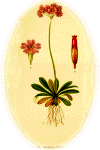


|
|
Rare plant recovering from sticky situation A link with Scotland's royal past |
|
|
It dances on the windswept crags of Arthur’s Seat, fragile and purple, a floral timeline dating back to the reign of James VI, a monarch who, it is said, would often pause to admire the Sticky Catchfly. The monarch’s admiration for Lychnis viscaria was not, 400 years on, going to be enough to save the rarest of Scottish plants. That would require a crane, a man with infinite patience,a controlled temperature environment of -20C and volunteers with wellies and watering cans in Edinburgh’s Holyrood Park. James, were he here, would be well pleased; dedication, science and tender loving care has saved the Sticky Catchfly for Edinburgh, the nation and lovers of flora. Today, in "relatively secret" locations on Arthur’s Seat, clumps of the king’s favourite flower are blooming. Until recently, it had been reduced to just four separate plants. The credit for saving the plant goes to the partnership of Scottish Natural Heritage, the Royal Botanic Garden and Historic Scotland, and the setting up of the Scottish rare plants project to inform public opinion, identify varieties of plants at risk and conserve them. It is co-ordinated by Phil Lusby, a bearded, passionate and committed botanist who is, effectively, the sole guardian of this precious part of Scotland’s natural heritage. Scotland is divided into 10km squares; plants occurring in 15 or fewer of the squares are deemed to benationally rare. There are approximately 100 nationally rare plants in Scotland, but the Sticky Catchfly was in severe trouble. The plant, which had first been recorded in Holyrood Park in the early 1600s was practically extinct. There had been two other plants in the Borders, but one was already
extinct and the other was dying. The plant favours volcanic rock and had
been the victim of collecting in Victorian times and quarrying.
|
Seeds from the plant were plentiful but the nature of its habitat meant they were falling onto bare rock and not producing the seedlings vital to replenishing growth. Mr Lusby explained: "It meant we had to physically collect the seeds. When the Historic Scotland park ranger closed the gates of the park in the evening, he'd get out a special vehicle with a lifting crane arm. "He’d carefully gather the precious seeds and we’d get them back to the gardens. We have access to a rare seed bank, where temperatures are maintained at -20C – it’s a controlled environment in which seeds will remain viable for several decades." Some of the seeds and grew while others were grown under protection in the herbaceous garden. When they grew to the seedling stage they were hardened off outside until they were ready to plant in a location near where the originals were located. Mr Lusby added: "It was extremely complex and time-consuming and we don’t actually advertise where they are located. "We’ve managed to keep them away from grazing animals and the rabbits, but we’re having to keep a very close eye on the slug problem. "Arguably, for the first time we have the capability to rewrite the history of a plant; it’s like a cross between medical intervention and having a baby. It’s very exciting," he added. However, it is not always man-made change that can kill off a species. Global environmental changes can have the same effect. Some plants, such as the once prolific bird’s eye primrose, have gone for ever. However, there are moments of pure joy, according to the botanists who trained at Aberdeen University and London’s Kew Gardens. Mr Lusby said: "A few weeks ago, we recorded in Scotland the arctic
liverwort – Athalamia lyaline– which is present in Scandinavia but
grows nowhere else in Great Britain."
|
| Reproduced
from
The Scotsman with permission |
|